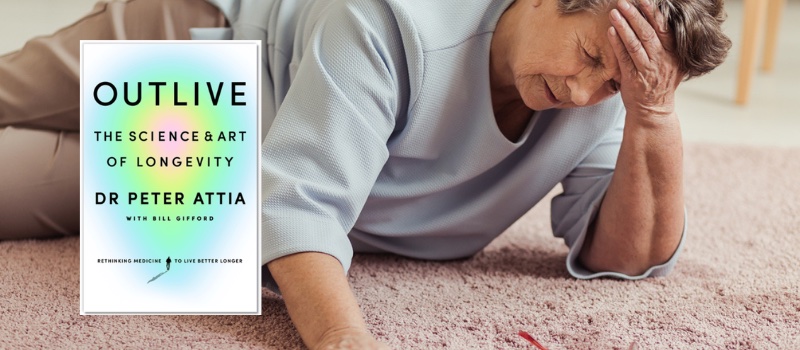
In his bestseller ‘Outlive’, Dr Peter Attia focuses on three DEXA scan metrics other than subcutaneous body fat. They are visceral fat</a >, muscle mass and, the subject of this post, bone density.
The strength of your bones is proportional to their density. The higher the density (to a point), the more solid and strong the bones and the less likely they are to fracture, whether that’s from playing rugby, in a car accident or simply from falling over.
Quoting US data, Attia says that falling over (main image, above) and related fractures are by far the leading cause of accidental deaths in those aged 65 and over.
He then states a startling statistic: “the mortality from a hip or femur fracture is staggering … up to one-third of people over sixty-five who fracture their hip are dead within a year.”
That’s why Attia test his patients’ bone density every 12 months with a DEXA bone scan.
Below are the bone density graphs for males and females from early childhood to age 20, clearly showing that BMD rises rapidly in early years.
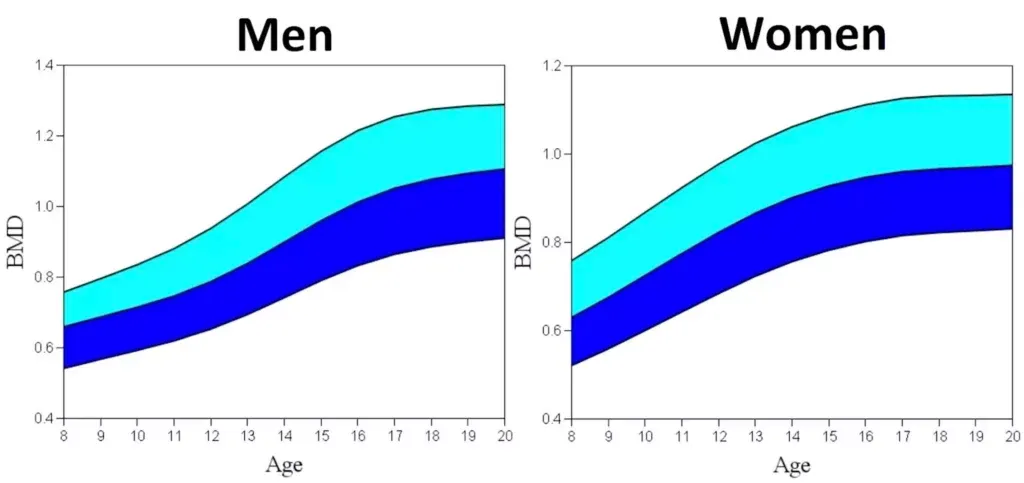
Beyond age 20, we can see that bone density continues to rise more slowly and then falls, with men reaching peak BMD at around 30, and women at around 40.
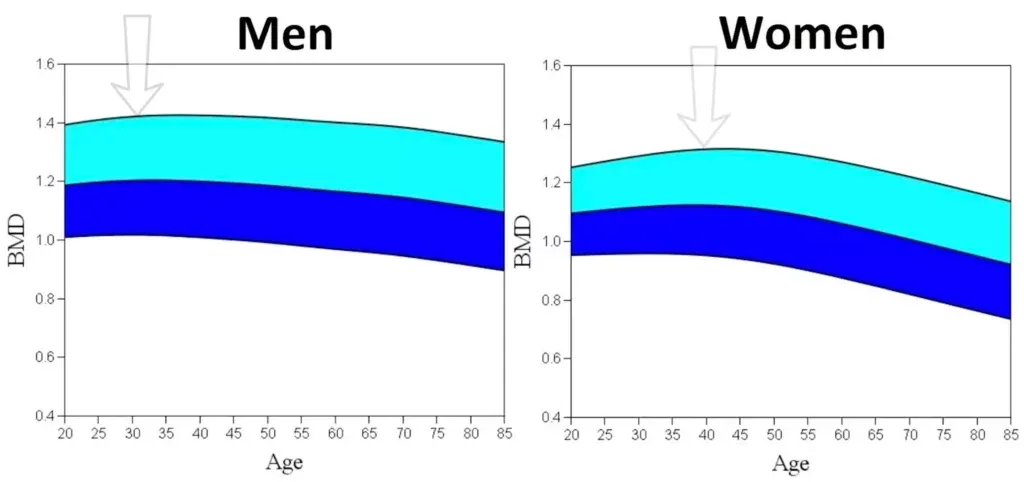
You can also see that the range for BMD values, from the bottom of the dark blue to the top of the light blue, is higher for men than women, and declines much more rapidly for women, usually after menopause.
When it comes to measuring bone density, it’s important here to draw a distinction and explain the difference between bone scans and body scans. Attia does not do that as clearly as he might in ‘Outlive’.
DEXA bone scans and DEXA body scans are two different modalities. Although a body composition scan provides only an indication of bone density (that is, a doctor would not make a definitive medical diagnosis), it IS based on the scanning of all your bones, and if your result is low we at Bodyscan will strongly advise you to seek specialist medical advice.
Although the two scan modalities are different, the advantage of a body scan is that it provides an indication of bone density, whereas a bone scan gives no information at all about body composition.
The definition of ‘normal’ bone density is that your result is in common with 95% of the local population of the same age, sex and ethnicity, which means we expect to see only 5% of people outside this range, 2.5% at the low end, 2.5% at the high end.
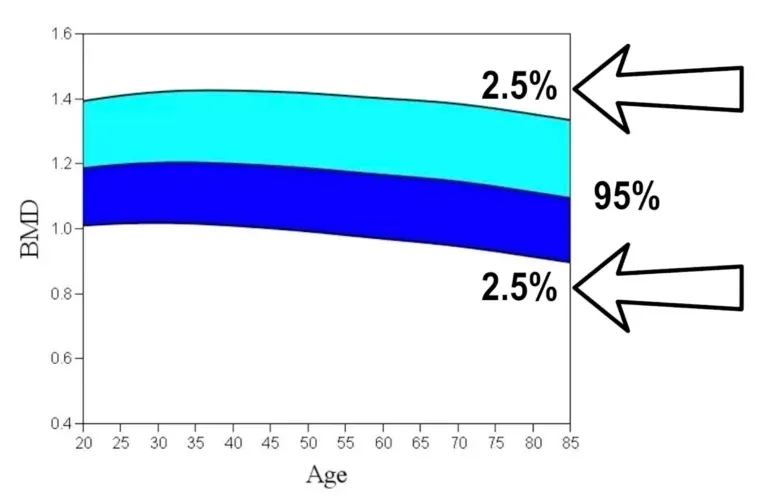
Bone fractures are more likely if bone density is low – these are conditions such as osteoporosis and its precursor, osteopenia.
On the DEXA scan bone density graphs, the blue zones represent the 95% of the population classed as normal. In mathematical terms, the normal range is defined by what are called Z-scores, from -2 at the bottom to +2 at the top, with a Z-score of zero being right in the middle the average line that separates the two blue areas.
While low bone density may be more prevalent among older people, below are four young Bodyscan customers, two women on the left and two men on the right, whose DEXA scan BMD results are well outside the bottom end of the range, indicating osteoporosis. The oldest is 37, the youngest just 26.
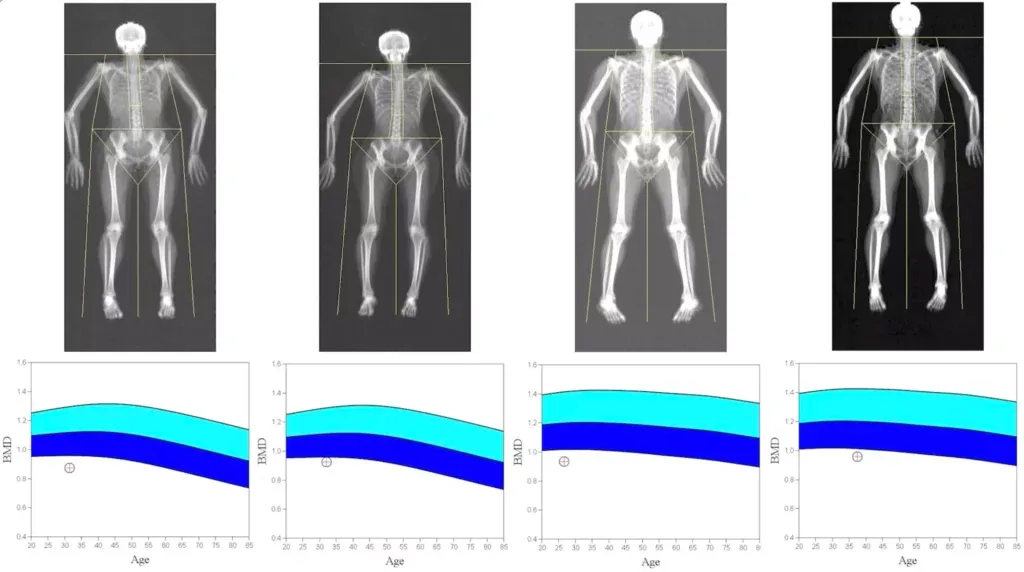
Their Z-scores, which should be above -2, range from -2.4 to -3.1. That means these young people all have bone density lower than an average 85-yo woman.
As stated earlier, a body scan gives only an indication of bone density, not a diagnosable result. But the results are consistent and over the long term we would be able to identify trends. Bone density moves slowly.
Below we see a man with low bone density declining further over three years.
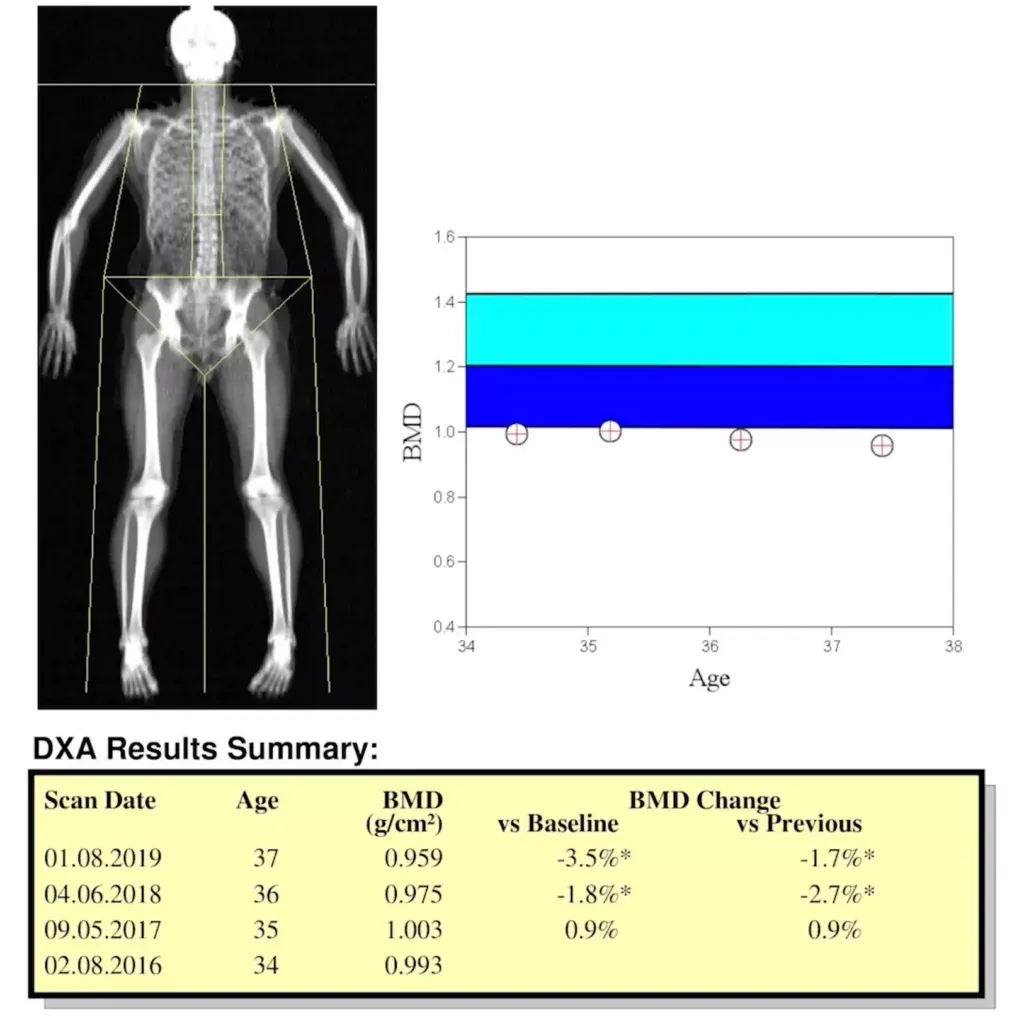
When Attia detects low BMD, he prescribes two changes in lifestyle before prescribing hormone replacement therapy or drugs.
Those two lifestyle changes are (1) to optimise nutrition with a focus on protein and (2) to engage in resistance training. He says that “strength training, especially with heavy weights, stimulates the growth of bone” because “bones respond to mechanical tension.”
Indeed, weight training is great for your bones and we see it at Bodyscan all the time, as in these case studies below.
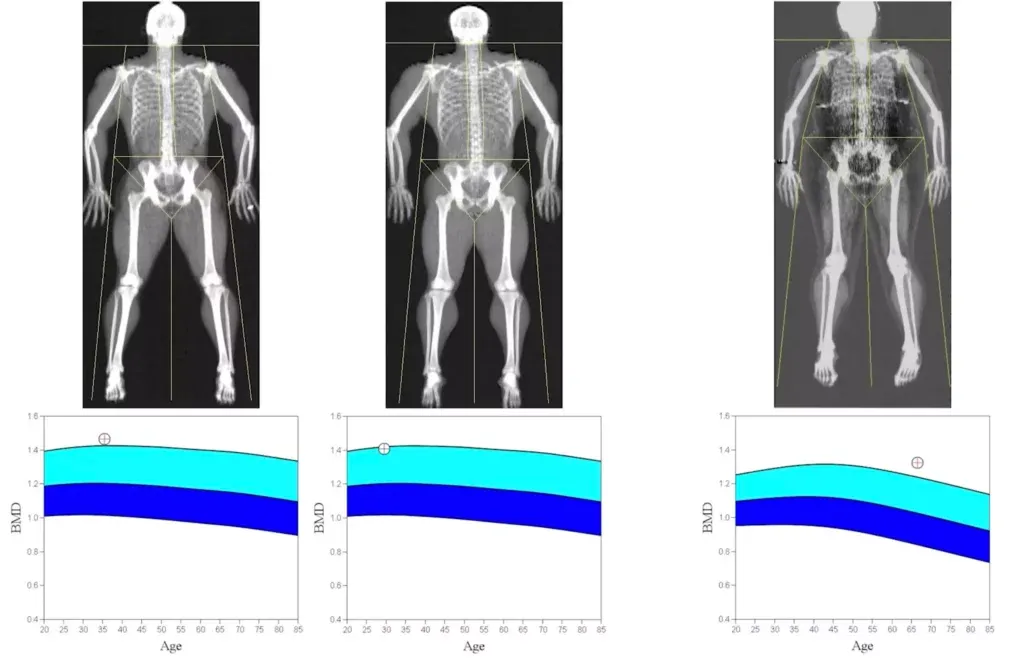
The two charts on the left are male bodybuilders. The chart on the right is for a 66-year-old woman who trains for strongwoman competitions and has bone density higher than most men and women. She is a superb example of the benefits of resistance training for all ages.
And below are two charts for the same weight-training woman with increasing BMD over a sustained period of eight years.
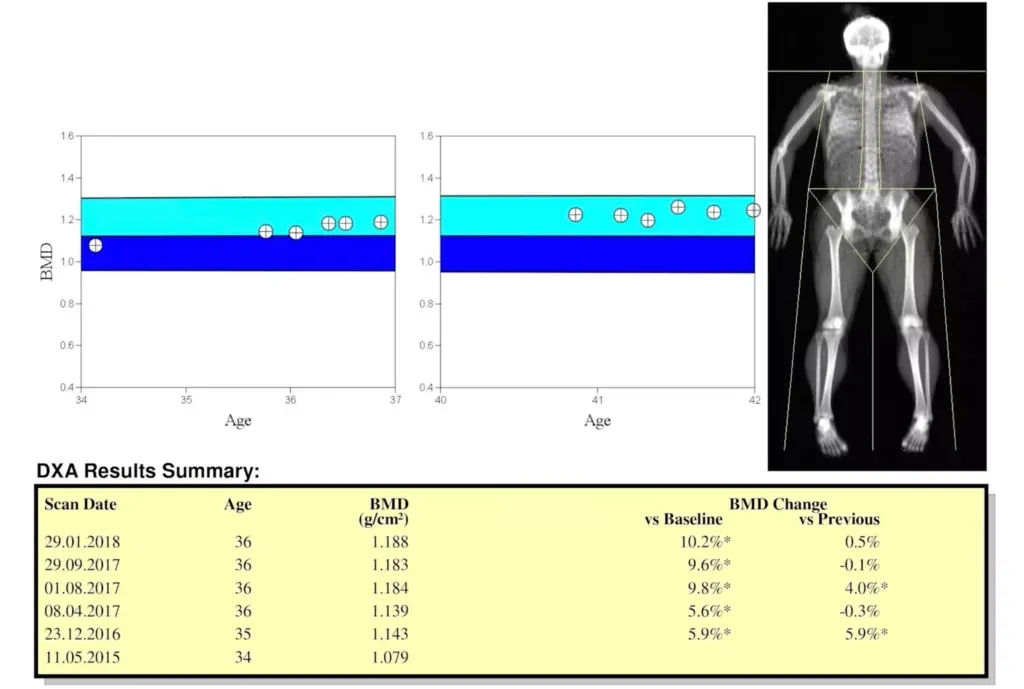
Incidentally, Attia says that resistance work is better for BMD than impact sports such as running (though running is better, he says, than swimming and cycling). Also, because estrogen is the key hormone in laying down more bone in response to resistance, Attia wouldn’t hesitate to prescribe hormone replacement therapy to prevent fractures. Because, even if a person doesn’t die from a fracture in later life, he says they may experience the “functional equivalent of death” in terms of their incapacity.
The misery that goes with a poor healthspan is why Attia is a fierce critic of what he calls ‘Medicine 2.0’, which treats health problems after they have occurred and just delays death without significantly improving your quality of life.
With his preventive ‘Medicine 3.0’ approach and the appalling fracture statistics, Attia wants to catch low bone density as early as possible, rather than wait, as he puts it, until you’re “staring danger in the eye.”
And that’s why he relies on the all-seeing eye of a DEXA scan to detect problems decades before they become too late to treat.
If you are interested in catching life-changing conditions before they occur, book a DEXA scan with Bodyscan now.
Philip Chant
Bodyscan